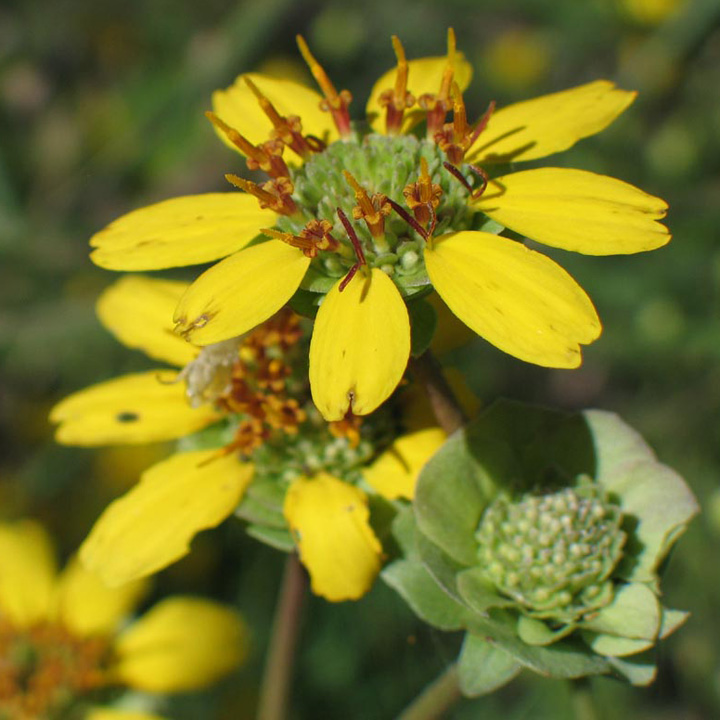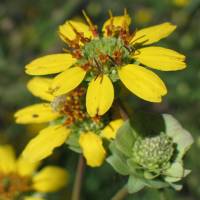Perennials or subshrubs, 8-120 cm (stems often arising annually from taproots or woody caudices; herbage usually hirsute, hispid, scabrous, or velvety). Stems decumbent to erect, usually branched (scapiform or ± leafy throughout). Leaves basal and/or cauline; alternate; petiolate or sessile; blades (± pinnately nerved) elongate-deltate, lanceolate, lyrate, oblanceolate, oblong, obovate, ovate, or spatulate, sometimes pinnately lobed to pinnatifid (usually each with deeper sinuses proximal), bases cordate or truncate to cuneate, ultimate margins usually crenate, dentate, or sinuate, faces hirsute, hispid, scabrous, or velvety. Heads radiate, borne singly or in paniculiform to corymbiform arrays. Involucres ± campanulate to ± hemispheric or broader, 12-30 mm diam. (broader in age). Phyllaries persistent (outer) or falling, usually 14-22 in 2-3+ series (inner broadly obovate to orbiculate, hairy, shed with cypselae). Receptacles ± turbinate (distally dilated, apices flattened to slightly depressed), paleate (paleae ± linear-conduplicate, each wrapped round a disc floret, distally dilated, hirtellous). Ray florets (2-)8(-13), pistillate, fertile; corollas pale yellow to orange-yellow (abaxially green or red to maroon or with 9-12, green or red to maroon, anastomosing, veins). Disc florets 80-200+, functionally staminate; corollas yellow or red to maroon, tubes shorter than throats, lobes 5, ± deltate. Cypselae (black) obcompressed or obflattened, mostly obovate (thin edged, not truly winged, hairy, at least adaxially; each adhering to and shed with 2 adjacent paleae, 2 disc florets, and a subtending phyllary); pappi 0, or persistent, ± coroniform (inconspicuous ridges or minute crowns of aristate teeth). x = 15.
All Berlandiera species have 2n = 30 and all but perhaps B. monocephala (which was unavailable for study) are intercrossable, resulting in all possible artificial interspecific hybrid combinations. Some combinations are not found in nature, e.g., B. lyrata × B. subacaulis, because distributions of potential parentals do not overlap (D. J. Pinkava 1964, 1967).






